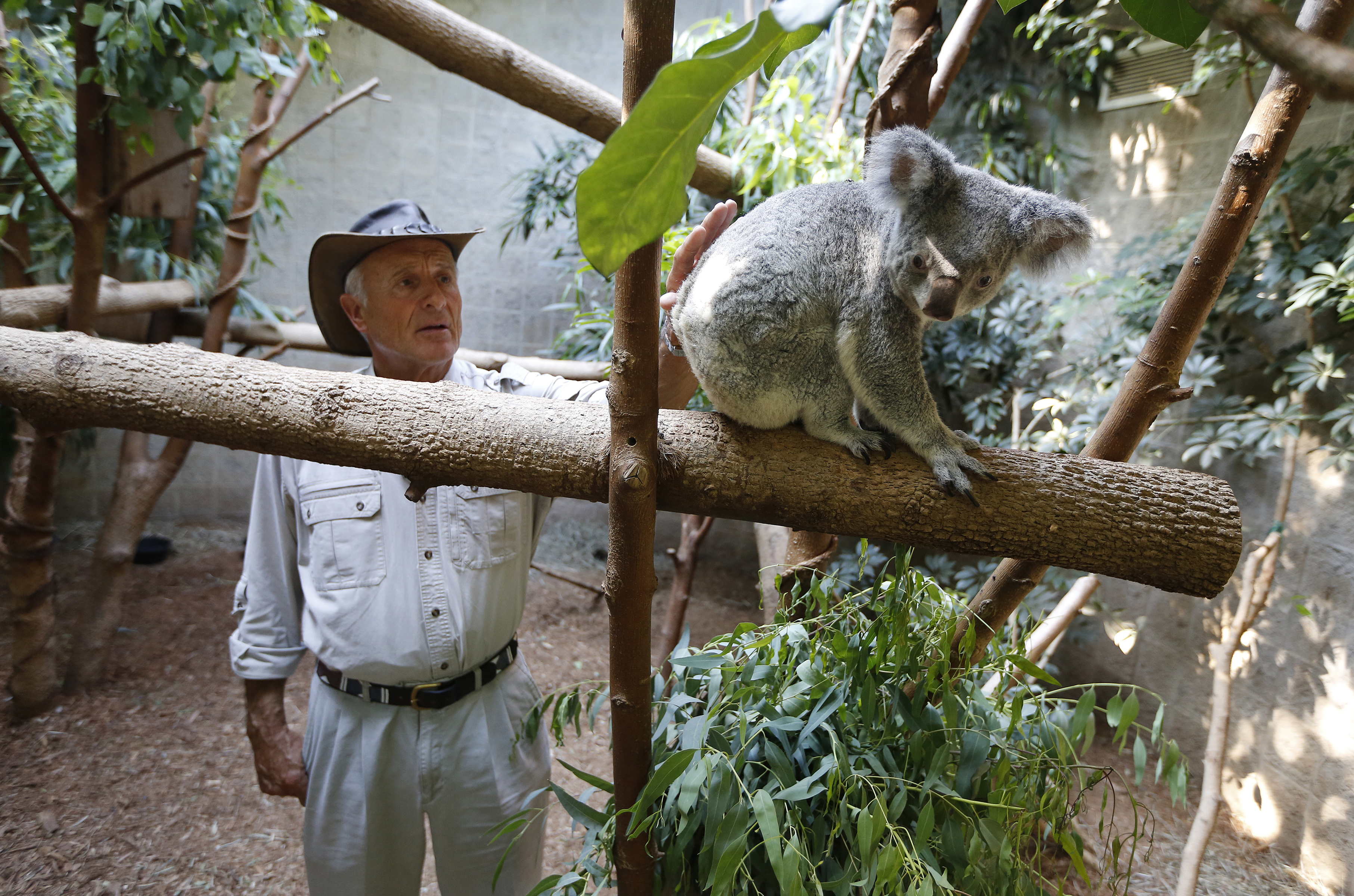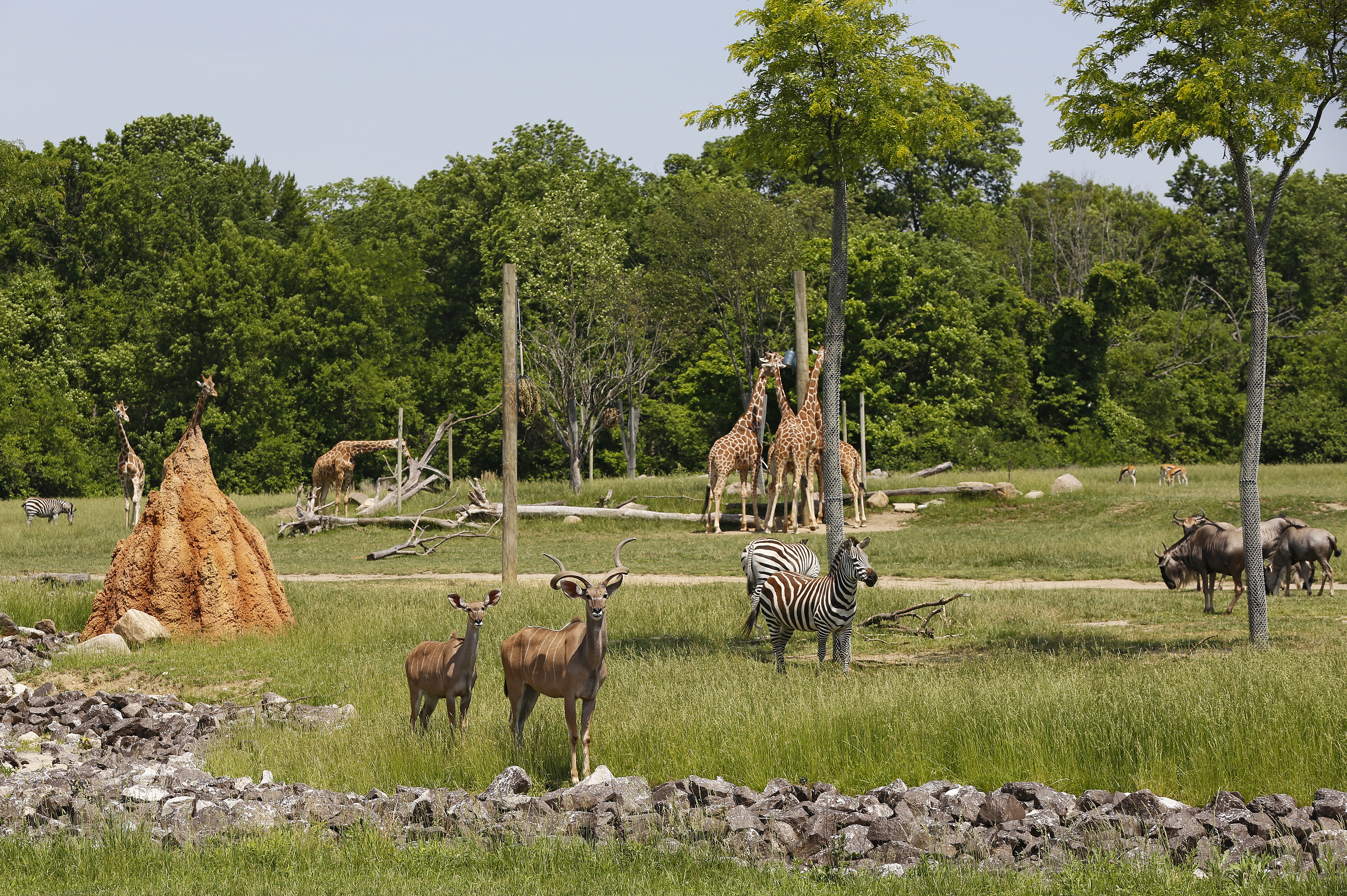
Hanna transformed zoo from nothing to really something
Don Winstel was a young zookeeper trimming trees in the giraffe yard when he had one of his first encounters with the new Columbus Zoo director.
Jack Hanna approached Winstel and thanked him for the job.
It was a simple gesture. But it was one of many that signaled change was coming to the Columbus Zoo in the late 1970s, when 31-year-old Hanna arrived from Knoxville, Tennessee, determined to put the foundering Columbus Zoo on the map.
Hanna quickly learned the scope of his challenge. Even people he encountered during his first trip to central Ohio, to interview for the position, didn't realize Columbus had a zoo because its reputation was so poor, he said.
So in the early days, he focused on making people feel appreciated, excited and proud of their jobs.
To do that, Hanna met with every employee he could. He cleaned animal cages, swept walkways and picked up trash with his wife, Suzi, and three daughters. He insisted that every structure be painted the same color.
"You could have Bigfoot out there, but it doesn't matter," Hanna said, suggesting that alone wouldn't draw crowds. "The people are what make the Columbus Zoo."
Eventually, morale rose, and Hanna was able to shift his focus toward marketing his product. He solicited donations to improve animal enclosures, even through some unusual means — such as taking a trained chimpanzee named Emily to wealthy businessmen to deliver a letter asking them for money at Christmastime.
Hanna "shook things up," and did it with infectious enthusiasm, said Winstel, who retired as assistant director of the zoo in 2008.
"He did it in a goofy way, and it was kind of paradoxical how it happened," said Winstel, who is now 66. "He didn't come off as somebody from Wall Street or anything like that. He was just a really nice guy."
The zoo has grown considerably in size and reputation since Hanna first arrived. A public celebration at the zoo is planned for next Saturday and Sunday, about a week before the date of Hanna's 40th anniversary.
The zoo's nearly 10,000 animals represent more than 600 species, and the zoo complex spans 588 acres. When Hanna started, it had less than half as many animals and only about 90 acres of land. The zoo now has 366 full-time employees on its properties, compared to 36 in 1978. And it collects $4 million in donations annually to send to more than 70 conservation projects worldwide. Before Hanna arrived, those efforts didn't exist.
Since 1978, more than 51 million people have walked through its turnstiles.
Earning a reputation
Hanna's international stardom spring-boarded from his zany TV appearances with animals in the 1980s. In time, his say-it-like-it-is attitude and larger-than-life personality, coupled with his vast knowledge of wild animals, made him a household name.
Hanna also credits much of the zoo's turnaround to its gorillas.
Like many zoo animals of that era, the primates were kept in indoor enclosures and had no contact with the outside world. In his first year, Hanna collected enough funds to renovate an old, unused elephant exhibit into a state-of-the-art outdoor habitat for the gorillas that opened in 1979.
It was the first of many renovations that gave the zoo's animals more accommodating, natural-looking habitats, a growing trend.
"That's when attendance started increasing," Hanna recalled. "Everything just took off."
In 1978, about 358,000 people visited the zoo. That number swelled to nearly 524,000 visitors in 1979, a 46 percent increase. Last year, the zoo welcomed 2.3 million visitors. Just a handful of accredited zoos and aquariums in the U.S. welcome more visitors, according to self-reported data from the Association of Zoos and Aquariums.
But not all of Hanna's plans went over as well as the habitat renovations.
Some, such as bringing ambassador animals into the community or hiring entertainers to walk a tightrope over tigers (which happened only once, in 1982), drew criticism from others in the zoo industry. Hanna was often as unpredictable as the animals he brought on TV, with "far-out" ideas requiring a little reigning in, recalled Norma Dodge, 93, whose late husband, Mel Dodge, a former Columbus Recreation and Parks director, hired Hanna in 1978.
He rarely turned down an opportunity, even a woman's plea to rescue a cat trapped on a concrete ledge of the O'Shaugnessy Dam, near the zoo, in 1979.
Perhaps even crazier: Hanna's strategies eventually worked, bolstering the zoo's reputation locally and worldwide.
"After a few years, every zoo wished they had Jack," Winstel said.
IN THE SERIES:
Jack Hanna's antics on TV put Columbus Zoo in national spotlight
The life and career of Jack Hanna
Columbus Zoo's animal ambassadors bring need for conservation efforts to life
In a sense, they now do.
Today, collaboration among zoos is a primary focus of members of the Association of Zoos and Aquariums, a nonprofit group of more than 230 accredited members in the United States and abroad. Despite a busy schedule, it's a responsibility Hanna takes seriously.
He's always willing to offer advice, speak at an event or promote a fundraiser.
When the director of the Niabi Zoo in Coal Valley, Illinois, for instance, was looking to upgrade its elephant habitat in the mid-1990s, he came to the Columbus Zoo looking for tips. He met Hanna, who had inspired him as a boy to become a zookeeper and that day to travel the world. That young director was Tom Stalf, now 50, the Columbus Zoo and Aquarium's president and CEO since 2013.
"He said, 'To inspire people to care about animals, you need to be an expert, and the only way you can be an expert is to go see the wild,'" Stalf said.
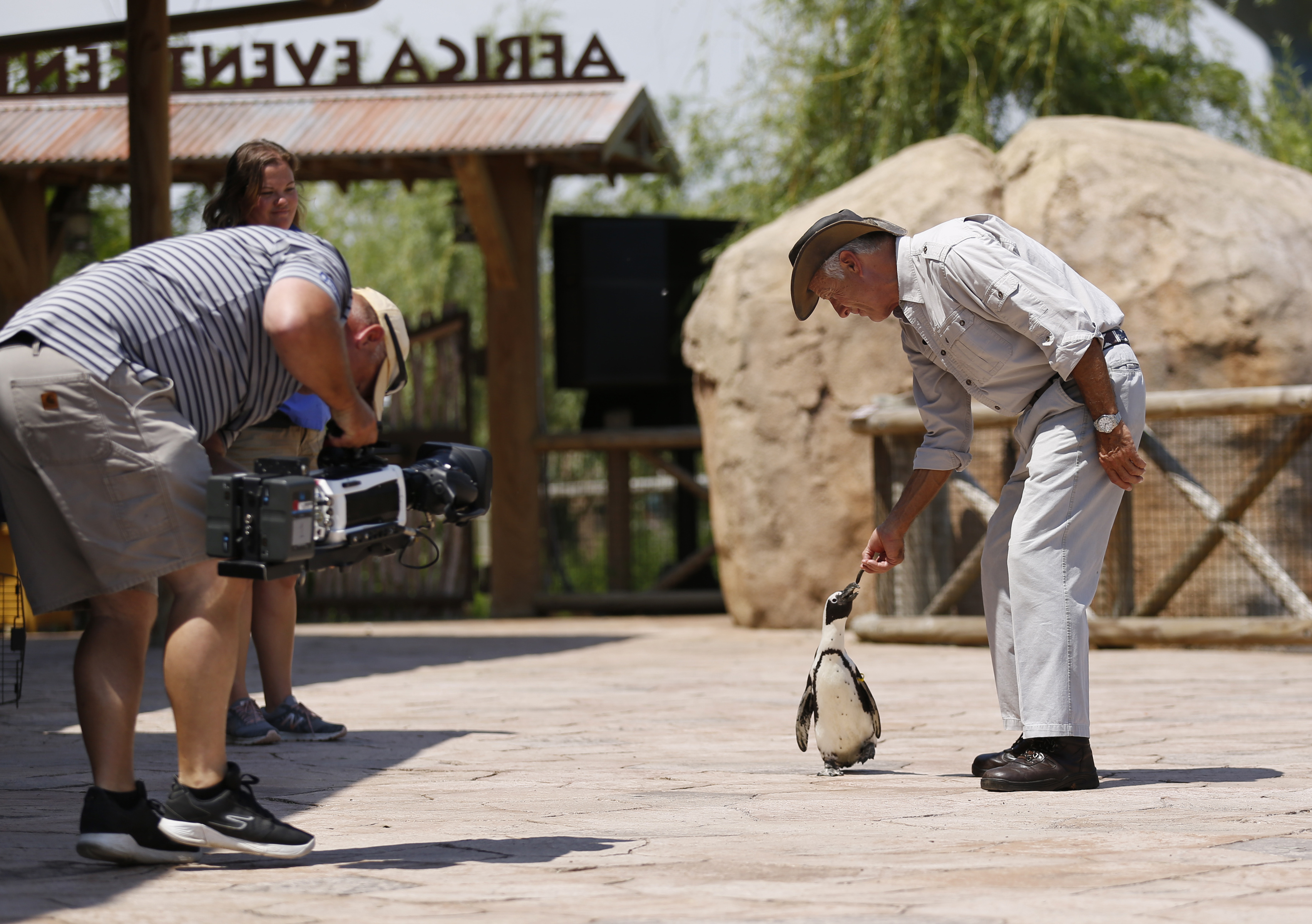
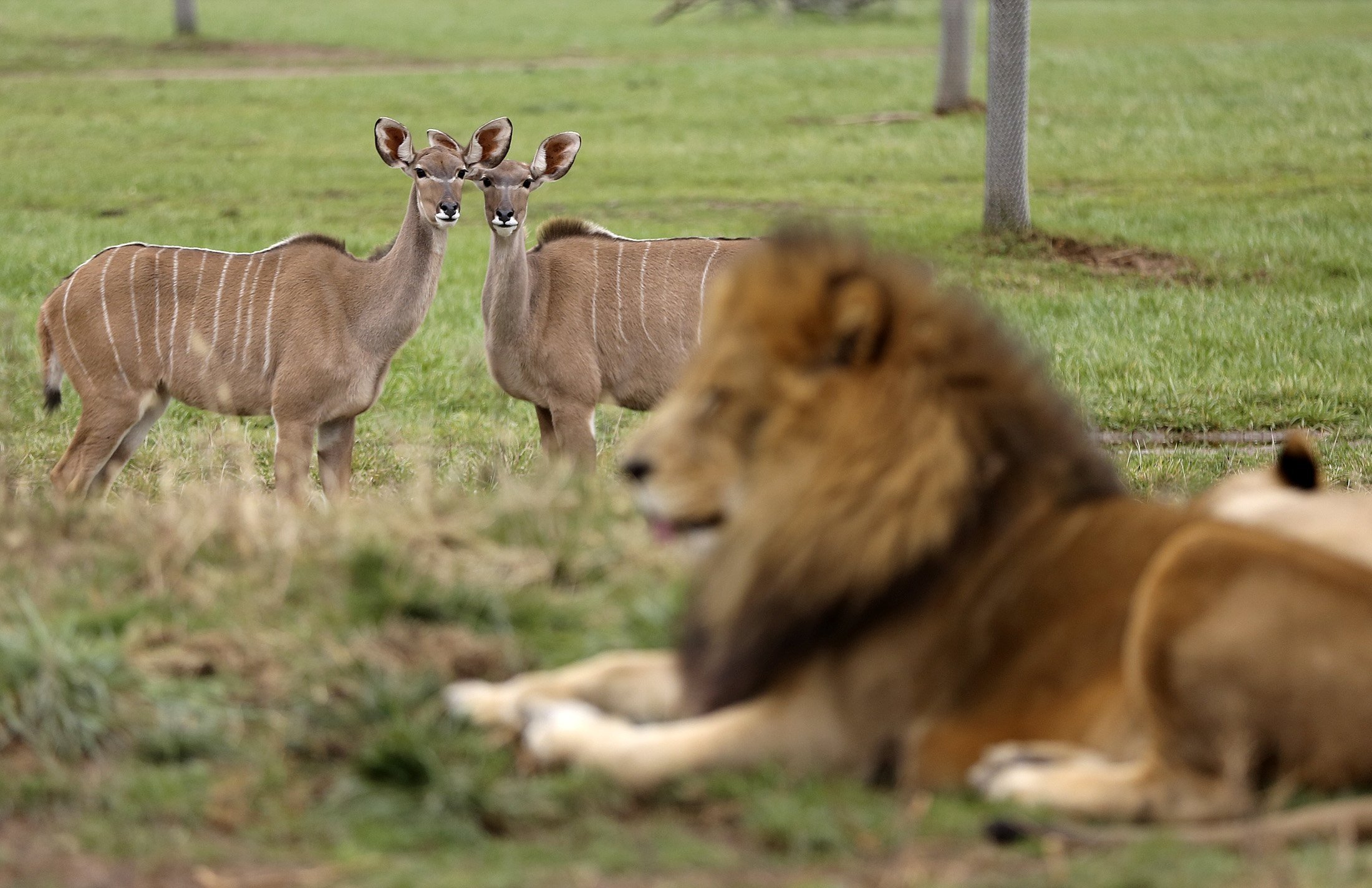
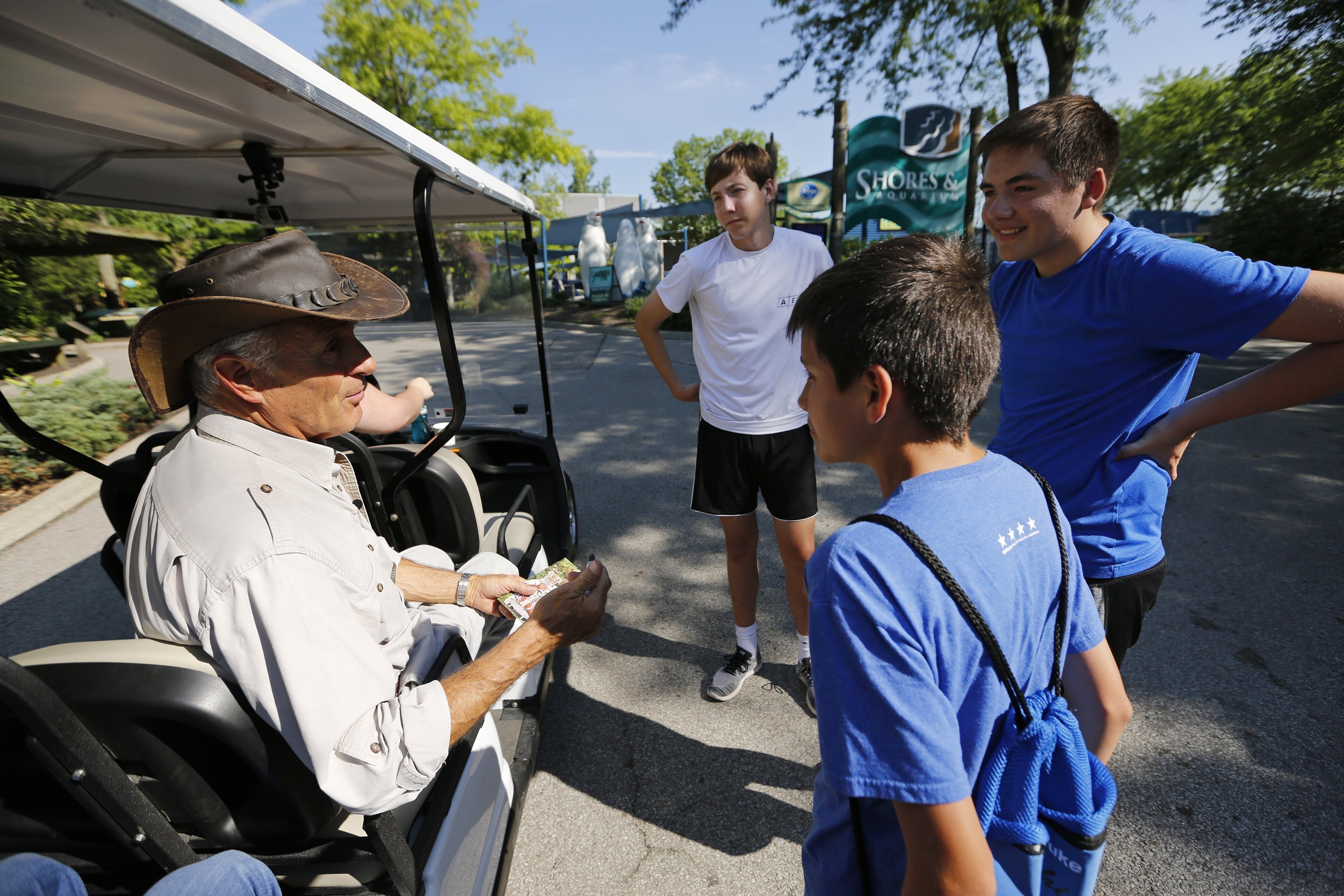
Fostering passion
Hanna stepped down from the Columbus Zoo's top job in 1992 to become director emeritus and focus on public appearances and his TV career.
Despite that, the zoo keeps expanding and transforming and now spans six habitat-themed areas: Congo Expedition, Australia & the Islands; Shores & Aquarium; Asia Quest, Heart of Africa and North America. The zoo also offers Zoombezi Bay water park and Jungle Jack's Landing, an amusement park.
Another renovation, Adventure Cove, is set to open in 2020 near the zoo's entrance. It will include a new exhibit featuring seals and sea lions and an Animal Encounters Village.
Through all the changes, the central Ohio community has embraced the zoo and Hanna's passion and commitment to wildlife conservation, said Ed Hansen, CEO of the American Association of Zookeepers.
"It's a struggle sometimes to get people passionate about the zoo or aquarium in their community," Hansen said. "That's where Mr. Hanna excels."
He hasn't outgrown Columbus, even though he easily could have, said Brian Ross, the president and CEO of Experience Columbus, the city's tourism and convention bureau.
Instead, he's become one of its biggest champions on an international stage. Whenever there is a public issue involving wildlife or zoos, Hanna is typically called upon as an expert on the matter.
"When we're out talking to clients, there are two things everybody knows: the Ohio State University, and Jack Hanna and our zoo," Ross said.
Hanna traces his inspiration back to St. Louis Zoo director Marlin Perkins, who hosted the revered TV program "Mutual of Omaha's Wild Kingdom" from 1963 to 1985. It was the first program to bring wildlife into the homes of viewers, including Hanna, who watched it as a teen.
"I dreamed of getting out of Tennessee and traveling the world," he said.
Even Perkins' stepdaughter, Marguerite Garrick, 67, says it's probably too generous to credit Perkins with much of Hanna's success.
"Maybe my dad paved the way," Garrick said. "But Jack more than succeeded on his own because he had the talent and determination to do it, and such a sincere passion for conservation."
Charles H. Hoessle, 87, director emeritus of the St. Louis Zoo, was hired by Perkins as a reptile keeper in 1963. He said people like Perkins and Hanna have made being a zoo director an honorable profession.
"I'm sure he's inspiring young people today, just as Marlin did to us," he said.
The next Jack Hanna?
So who will inspire the next generation of zookeepers and promote the Columbus Zoo after Hanna's time in the spotlight is over?
Zoo officials say they aren't too worried about replacing Hanna when he retires, because he's one of a kind. They're instead focused on continuing his mission and ensuring that his legacy lives on.
Stalf joked that you'll never see him walking around in khakis and a safari hat.
"There's no question about it, I'm in the shadows of the jungle," Stalf said. "That's perfectly fine, as long as I have an opportunity to speak about Jack's legacy and his passion for animals. It's an honor."
Others in the zoo profession agree with that approach.
IN THE SERIES:
Q&A | Jack Hanna answers your burning questions
John Switzer: Reporting on Jack Hanna was never boring
Jack Hanna remembers beaver bite on Letterman show
Instead of having one iconic spokesperson, zookeepers everywhere can work together every day to continue conserving wildlife, Hansen said.
"It doesn't mean the passion is gone," he said. "It means it has spread out."
In that spirit, the zoo established a Jack and Suzi Hanna Fund this year to help support wildlife conservation, education and innovative habitats. At a surprise "Hanna-versary" celebration in June attended by 370 guests, officials announced they'd already collected $1.5 million to support the fund.
Hanna called the occasion the "greatest honor he's ever been given."
When he talks seriously about retirement, Hanna, 71, says the Columbus Zoo is the one aspect of his career he'll likely never pull himself away from completely. Staff members tell him to slow down, both to preserve his health and so he can enjoy things outside of work, including his six grandchildren.
"The zoo is my life, our family's life," Hanna said.
Hanna said he'll continue to support the Columbus Zoo as long as he can, but whenever his time comes, its successes will certainly continue without him.
"This zoo has been built by people, not Jack Hanna," he said.
Like what you're reading?
Stories that inspire. Coverage that informs. Investigations that affect change. This is real news just when it's needed most. Subscribe today. Subscribe